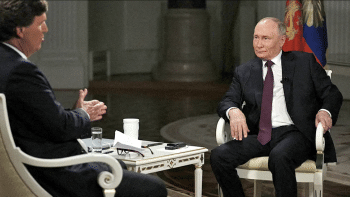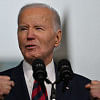Are the Fed and Biden engaged in a duel?

For my readers, particularly those with a slight interest in presidential elections, the next few months will provide a golden opportunity to catch up on the art and science of economic policymaking, as the US proceeds to the run-up to the next elections, on November 5. The Federal Reserve System (Fed), the arbiter of monetary policy in the US, is facing a number of challenges. The most important decision it will make is when to start lowering the interest rate and how fast to go without unleashing forces that might rekindle inflation. However, there is a flip side to this decision. The Fed could simply bide its time, keeping the rate at the current high level, and set in motion a recession, a "hard landing" as it is now known. The latter option could be counted as a political faux pas by the Democrats and the incumbent President Biden.
One may ask, how did the Fed get into this possible lose-lose situation? It was only a few months ago that inflation was raging in the US and the rest of the world. Then, the twin wars in Ukraine and the Middle East overshadowed the economy and have been dominating the news cycle. However, the war on inflation is not over yet. The central banks in the US, Europe and Japan are now confronting a new dilemma which has political ramifications. In a word, the Fed and the other bankers face the question: "Should we take the foot off the brake pedal?" For most readers, a little background to the present crisis may help.
Monetary policymaking, particularly raising and lowering interest rates, is a process. It is a tool that has a time and a scale dimension. You raise the interest rate too fast and you risk a recession and higher unemployment. Now that most countries in 2024 have reined in the inflationary forces that we saw in 2022 and 2023, the next step for policymakers is to consider follow-up action. When do you start cutting the interest rate, and by how much? In how many steps?
The Fed learned from its bitter experience in the 1970s that inflation rears its ugly head again if the Fed lowers its guard prematurely. It is now counting on a soft landing, which by definition is when the Fed is successful in bringing the inflation rate to its target of two percent without causing higher unemployment, negative GDP, and a recession.
The US economy was hit by record-breaking inflation after President Biden took office in 2021. The New York Times reported that a recent internal analysis by White House economists suggests that no single factor is weighing more on consumer sentiment than grocery prices. Those costs soared in 2022 and have not fallen, though their rate of increase has slowed.
To tamp down the surging inflation by slowing the economy, the Fed raised the short-term federal funds target rate it controls eleven times between March 2022 and July 2023, from 0.25-0.5 percent to 5.25–5.5 percent, the highest it has been in over 20 years. The inflation rate has come down since its summer 2022 peak, and there is constant speculation about the Fed's next course of action. Currently, while the interest rate is high, other economic indicators are positive: stable GDP growth, low unemployment and lower inflation.
Given this background, the Fed is in no hurry to make a decision since any false move could jeopardise the economy. The policymaking body of the Fed, known as the Federal Open Market Committee (FOMC), meets eight times a year and its next meeting is scheduled for March 19-20. It is almost certain that the Fed will wait for additional data. GDP spiked to 4.9 percent in 3Q 2023 (not a good thing when the Fed is trying to fight inflationary pressures) but moderated down to 3.2 percent in 4Q 2023. Again, the Fed would like to see it lower.
As can be expected, the financial markets are going with the flow and that is pinching home buyers. On February 23, 2024, the average interest rate on a 30-year fixed-rate mortgage jumped 17 basis points to 7.088 percent APR. The average rate on a 15-year fixed-rate mortgage rose 11 basis points to 6.292 percent APR, and the average rate on a five-year adjustable-rate mortgage went up five basis points to 7.951 percent APR. A basis point is one one-hundredth of one percent. Rates are expressed as an annual percentage rate, or APR.
With the availability of big data and artificial intelligence tools, the Fed can now bank on better modelling and decision algorithms to forecast whether the soft landing is here. In a National Bureau of Economic Research (NBER) paper entitled "The Data Revolution and Economic Analysis," economics professors Liran Einav and Jonathan D Levin of Stanford University discuss how large-scale datasets greatly improve the way we measure, track and describe economic activity, as well as trace the consequences of different events and policies.
The inflation rate has dipped less than economists had expected in January after easing in previous months. Indications are apparent that the Fed is now saying, "Soft landing! Not yet," and has taken a "wait and see" attitude. Its economists are also aware that external shocks (tariffs, geopolitical risks, or other unknown shocks) can also upset the cart.
Reports on consumer and producer prices earlier this month have already shown inflation running unexpectedly hot to start the year. That has scrambled investors' bets on when the Fed might begin cutting interest rates this year. At the end of the last FOMC meeting, the Fed stated in a press release on January 31, "The Committee does not expect it will be appropriate to reduce the target range until it has gained greater confidence that inflation is moving sustainably toward 2 percent."
Obviously, this might not be good news for the administration because this is an election year, and Biden is already on very shaky grounds because of his past performance. "More Americans disapprove of his handling of the economy than approve of it," according to The New York Times. He and his party are counting on lower interest rates to provide the average person a little relief and boost his poll numbers.
As for the global economy, IMF last month boosted its forecast for global economic growth in 2024 to 3.1 percent, citing a better-than-expected expansion in the US and fiscal support from China. The central bankers will keep their eyes on inflation data, and probably follow the lead of the Fed.
Dr Abdullah Shibli is an economist and works for Change Healthcare, Inc, an information technology company. He also serves as senior research fellow at the US-based International Sustainable Development Institute (ISDI).
Views expressed in this article are the author's own.
Follow The Daily Star Opinion on Facebook for the latest opinions, commentaries and analyses by experts and professionals. To contribute your article or letter to The Daily Star Opinion, see our guidelines for submission.

 For all latest news, follow The Daily Star's Google News channel.
For all latest news, follow The Daily Star's Google News channel. 










Comments